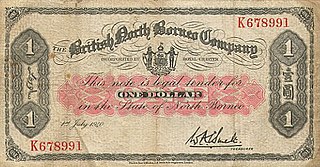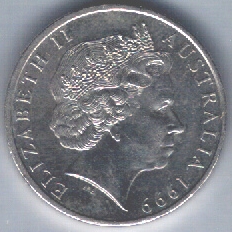Gallery
- Obverse 2+1⁄2 cent, 1941.
- Reverse 2+1⁄2 cent, 1941.
- 2+1⁄2 cents 1858 minted for the Dutch East Indies.
The Two and a half cent coin was struck in the Kingdom of the Netherlands between 1818 and 1942. All coins were minted in Utrecht.
| Dimensions | 2+1⁄2 cents 1877–1941 | 2+1⁄2 cents 1941–1942 | Refs |
|---|---|---|---|
| Mass | 4 g | 2 g | [1] |
| Diameter | 23.69 mm (1877–1898) 23.5 mm (1903–1906) 23 mm (1912–1941) | 20 mm | |
| Thickness | 1.1 mm (1903–1906) 1 mm (1912–1941) | ? mm | |
| Metal | Bronze | Zinc |
| Monarch | Mint | Material | Obverse | Reverse | Edge | Minting years | Refs |
|---|---|---|---|---|---|---|---|
| William III | Utrecht | Bronze | Crowned lion with sword and quiver | Value between two bonded orange branches | Reeded with no edge lettering | 1877, 1880, 1881, 1883, 1884, 1886, 1890 | [2] |
| Wilhelmina | Utrecht | Bronze | Crowned lion with sword and quiver (bigger mint master mark) | Value between two bonded orange branches | Reeded with no edge lettering | 1894, 1898 | |
| Wilhelmina | Utrecht | Bronze | Crowned lion with sword and quiver (smaller mint and mint master mark) | Value between two bonded orange branches | Reeded with no edge lettering | 1903–1906 | |
| Wilhelmina | Utrecht | Bronze | Crowned lion with sword and quiver (different crown and bigger lettering) | Value between two bonded orange branches (different orange branches and bigger lettering) | Reeded with no edge lettering | 1912–1916, 1918, 1919, 1929, 1941 | |
| German occupation coin | Utrecht | Zinc | Frisian owl board | Value with four waves and two cereal ears | Smooth with no edge lettering | 1941, 1942 |
The quetzal is the currency of Guatemala, named after the national bird of Guatemala, the resplendent quetzal. In ancient Mayan culture, the quetzal bird's tail feathers were used as currency. It is divided into 100 centavos, or len in Guatemalan slang. The plural is quetzales.

The lira was the currency of Italy between 1861 and 2002. It was introduced by the Napoleonic Kingdom of Italy in 1807 at par with the French franc, and was subsequently adopted by the different states that would eventually form the Kingdom of Italy in 1861. It was subdivided into 100 centesimi, which means "hundredths" or "cents". The lira was also the currency of the Albanian Kingdom from 1941 to 1943.
The boliviano is the currency of Bolivia. It is divided into 100 cents or centavos in Spanish. Boliviano was also the name of the currency of Bolivia between 1864 and 1963. From April 2018, the manager of the Central Bank of Bolivia, Pablo Ramos, announced the introduction of the new family of banknotes of the Plurinational State of Bolivia, started with the 10 Bs note, and then gradually arrived to introduce the 200 Bs note, presented in April 2019. The new family of banknotes of the Plurinational State received several awards such as "the best banknotes in Latin America", was highlighted by its security measures, its aesthetics and its inclusion of prominent figures in Bolivian history, being among those who awarded the "Latin American High Security Printing Press Conference".
The coins of the South African pound were part of the physical form of South Africa's historical currency, the South African pound. Prior to the Union of 1910, various authorities issued their own pounds, some as independent entities. After the Union but before 1923, coins in circulation were mostly British, but the coins of Paul Kruger's South African Republic remained in circulation. In 1923, South Africa began to issue its own coins, adopting coins that were identical in size and value to those used in Great Britain: 12 pence (12d) = 1 shilling (1s), and 20s = 1 pound (£1). On 14 February 1961, the Union of South Africa adopted a decimal currency, replacing the pound with the Rand.

The Swiss franc has been the currency of Liechtenstein since 1920. The Swiss franc is legal tender since Liechtenstein is in a customs and monetary union with Switzerland. The 1980 treaty between Switzerland and Liechtenstein allows Liechtenstein to mint limited amounts of Swiss francs with a Liechtenstein inscription, but only in the form of commemorative coins, and they are not allowed to issue banknotes.

The British North Borneo dollar was the currency of British North Borneo from 1882 to 1953. It was subdivided into 100 cents. The dollar had remained at par with the Straits dollar, the currency of Malaya and Singapore, at the value of one dollar to 2 shillings 4 pence sterling from its introduction until both currencies were replaced by the Malaya and British Borneo dollar in 1953. Both coins and banknotes were issued by the British North Borneo Company.

The twenty-cent coin of the Australian decimal currency system was issued with conversion to decimal currency on 14 February 1966, replacing the florin which was worth two shillings, a tenth of a pound.

Christopher Ironside OBE, FRBS was an English painter and coin designer, particularly known for the reverse sides of the new British coins issued on decimalisation in 1971.
The One guilder coin was a coin struck in the Kingdom of the Netherlands between 1818 and 2001. It remained in circulation until 2002 when the guilder currency was replaced by the euro. No guilder coins were minted in the German occupation of the Netherlands in World War II.
The half-cent coin was a Dutch coin used from 1818 to 1940. It was the smallest-denomination coin of the decimal Dutch guilder until its withdrawal from circulation after the German occupation of the Netherlands in 1940. It was nicknamed "Halfje", similar to the Kwartje.

The krone coin is the second-smallest denomination of the Danish krone.

The twenty-five cent was a coin worth a quarter of decimal Dutch guilder. It was used from the decimalisation of the currency in 1817 until the Netherlands adopted the euro as sole currency in 2002. The last minting was in 2001. The coin was the third-smallest denomination of the guilder when the currency was withdrawn, and the largest of a value less than one guilder.

The 2 øre coin was made during the German occupation of Denmark between 1941 and 1945, and then by the Danish government in 1947. It was first minted in aluminium, and then from 1942 to 1947 in zinc. The aluminium 2 øre is identical to the zinc variety, although the latter is a little heavier in weight.

The 2+1⁄2-cent coin minted in the Netherlands during World War II was made of zinc, and worth 1⁄40, or .025, of the Dutch guilder. It was designed by Nico de Haas, a Dutch national-socialist, and struck in 1941 and 1942.

The Five cent coin was a coin struck in the Kingdom of the Netherlands between 1818 and 2001. Twenty stuivers equalled a Dutch Guilder.
The Half guilder coin was a silver coin struck in the Kingdom of the Netherlands between 1818 and 1930. The obverse featured a portrait of the Dutch reigning King or Queen. On the reverse was a crowned Dutch coat of arms between the value. All coins were minted in Utrecht except the year 1829 and 1830 that were minted in Brussels.

The one-cent coin was a coin struck in the Kingdom of the Netherlands between 1817 and 1980. The coin was worth 1 cent or 1⁄100 of a Dutch guilder.
The Three guilder coin was a silver coin struck in the Kingdom of the Netherlands between 1817 and 1832.

The Indian 10-rupee coin is a denomination of the Indian rupee. The ₹10 coin is the second highest-denomination coin minted in India since its introduction in 2005. The present ₹10 coin in circulation is from the 2019 design. However, the previous ₹10 coins minted before 2019 are also legal tender in India. All ₹10 coins containing with and without the rupee currency sign are legal tender, as stated by the Reserve Bank of India. Along with the standard designs, there are 4 different designs for this denomination and this is used alongside the 10 rupee banknote.

The Philippine fifty-centavo coin (50¢) was a denomination of Philippine currency. It was minted for the Philippines from 1864 to 1994 and was demonetized in 1998.